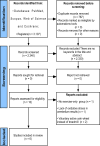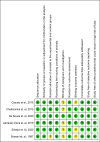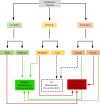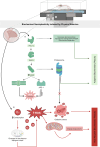Biochemical neuroplasticity in the cerebellum after physical exercise: Systematic review and meta-analysis
- PMID: 40748906
- PMCID: PMC12316286
- DOI: 10.1371/journal.pone.0309259
Biochemical neuroplasticity in the cerebellum after physical exercise: Systematic review and meta-analysis
Abstract
Background: Neuroplasticity is the central nervous system's (CNS) capacity to adapt to injuries or environmental changes. Biochemical neuroplasticity is one such adaptation that may occur in response to physical exercise (PE). This systematic review and meta-analysis aimed to evaluate the effects of PE on cerebellar biochemical neuroplasticity.
Methods: Following the PICO strategy, this review included in vivo studies with small rodents (Population) subjected to well-defined PE protocols (Intervention) and compared to non-exercised controls (Comparator) to assess cerebellar biochemical alterations (Outcome). Studies published between January 1976 and July 2024 without language restrictions were searched in PubMed, Scopus, Web of Science, and Cochrane Central databases. Data were synthesized through meta-analyses and methodological quality was assessed by the SYRCLE risk of bias tool.
Results: Out of 3,107 records screened, six studies met the inclusion criteria for qualitative and quantitative analyses. All studies had a low or unclear risk of bias. Markers of biochemical neuroplasticity assessed included superoxide dismutase (SOD), catalase (CAT), glutathione (GR), reduced glutathione (GSH), glutathione peroxidase (GSH-Px), glutathione disulphide (GSSG) and lipid peroxidation (LPO). Meta-analyses showed that moderate-volume PE significantly reduced LPO (SMD = -2.41; 95% CI: -3.89 to -0.93), while high-volume PE increased LPO (SMD = 4.55; 95% CI: 1.92 to 7.18). Low-intensity or low-volume PE did not significantly alter oxidative markers.
Conclusions: PE induces either adaptive or maladaptive biochemical neuroplasticity in the cerebellum depending on protocol variables. While enzymatic activity responds to cellular changes and limits nervous tissue protection, adaptive biochemical neuroplasticity seems to confer greater resistance and efficiency.
Copyright: © 2025 Corrêa et al. This is an open access article distributed under the terms of the Creative Commons Attribution License, which permits unrestricted use, distribution, and reproduction in any medium, provided the original author and source are credited.
Conflict of interest statement
The authors have declared that no competing interests exist.
Figures








Similar articles
-
Falls prevention interventions for community-dwelling older adults: systematic review and meta-analysis of benefits, harms, and patient values and preferences.Syst Rev. 2024 Nov 26;13(1):289. doi: 10.1186/s13643-024-02681-3. Syst Rev. 2024. PMID: 39593159 Free PMC article.
-
Psychological therapies for panic disorder with or without agoraphobia in adults: a network meta-analysis.Cochrane Database Syst Rev. 2016 Apr 13;4(4):CD011004. doi: 10.1002/14651858.CD011004.pub2. Cochrane Database Syst Rev. 2016. PMID: 27071857 Free PMC article.
-
Exercise interventions and patient beliefs for people with hip, knee or hip and knee osteoarthritis: a mixed methods review.Cochrane Database Syst Rev. 2018 Apr 17;4(4):CD010842. doi: 10.1002/14651858.CD010842.pub2. Cochrane Database Syst Rev. 2018. PMID: 29664187 Free PMC article.
-
Physical exercise training interventions for children and young adults during and after treatment for childhood cancer.Cochrane Database Syst Rev. 2016 Mar 31;3(3):CD008796. doi: 10.1002/14651858.CD008796.pub3. Cochrane Database Syst Rev. 2016. PMID: 27030386 Free PMC article.
-
Cognitive behavioural therapy (CBT) with and without exercise to reduce fear of falling in older people living in the community.Cochrane Database Syst Rev. 2023 Nov 15;11(11):CD014666. doi: 10.1002/14651858.CD014666.pub2. Cochrane Database Syst Rev. 2023. PMID: 37965937 Free PMC article.
References
-
- Deppermann S, Storchak H, Fallgatter AJ, Ehlis AC. Stress-induced neuroplasticity: (Mal)adaptation to adverse life events in patients with PTSD – a critical overview. Neuroscience. 2014;283:166–77. - PubMed
Publication types
MeSH terms
Substances
LinkOut - more resources
Full Text Sources
Medical
Miscellaneous

